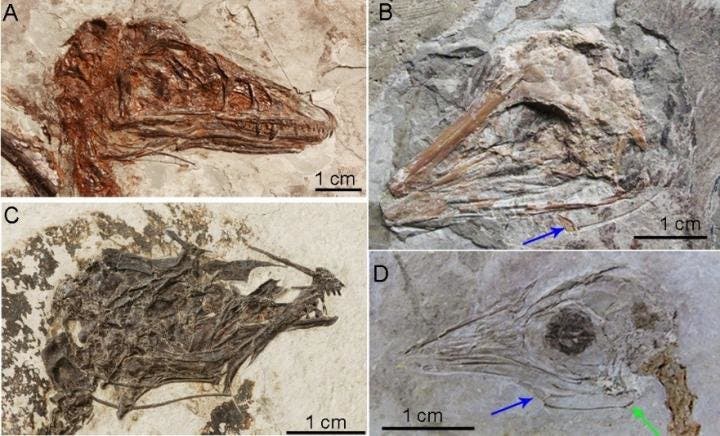The idea of a roaring tyrannosaur run amok, flailing its head and tongue around, might not be accurate at all researchers say.

It’s funny how one of the fiercest predators in our planet’s history — if not the fiercest — is the butt of so many jokes in modern times. The small arms of the T-Rex are so well-known that they often precede the dinosaurs’ incredible reputation. But no matter how you look at it, in its heyday, T-Rex was a killing machine. Its immense head offered an ungodly biting strength, which T-Rex used to the fullest.
Now, researchers have compared the mouth anatomy of T-Rex and other ancient reptile species to their closest living avian and reptilian relatives, including alligators. They were particularly looking at the hyoid bones, which anchor the tongue to the body.
Unlike other bones, the hyoid is only distantly articulated to other bones by muscles or ligaments — instead, it is anchored by muscles from the anterior, posterior, and inferior directions (front, back, and below). The hyoid bones aids in tongue movement and swallowing, while also providing attachment to the floor of the mouth and the tongue above, the larynx below, and the epiglottis and pharynx behind.
Tongues are often not the focus of paleontology studies, but they can offer important insight into the creature’s lifestyle and evolutionary patterns.
“Tongues are often overlooked. But, they offer key insights into the lifestyles of extinct animals,” said lead author Zhiheng Li, an associate professor at the Key Laboratory of Vertebrate Evolution and Human Origins of the Chinese Academy of Sciences.
The results show that the hyoid bones of most dinosaurs were like those of alligators and crocodiles — short, simple, and connected to a tongue that was not very mobile. In other words, like today’s crocodiles, tyrannosaurs likely couldn’t stick their tongue out. This goes directly against the grain of how these dinosaurs are depicted in popular media.
“They’ve been reconstructed the wrong way for a long time,” said study author Julia Clarke, a professor at the University of Texas Jackson School of Geosciences, in a statement. “In most extinct dinosaurs, their tongue bones are very short. And in crocodilians with similarly short hyoid bones, the tongue is totally fixed to the floor of the mouth.”
However, this wasn’t the case for all the dinosaurs researchers studied. Pterosaurs, bird-like dinosaurs that could fly have a great diversity in hyoid bone shapes (just like living birds, and often have very mobile tongues. Clarke and her team suspect that this feature could potentially be connected to other evolutionary traits such as flying.
“Birds, in general, elaborate their tongue structure in remarkable ways,” Clarke said. “They are shocking.”
Essentially, they say that if the forelimbs started developing into wings, this could have drastically reduced the ability of birds and pterosaurs to manipulate food, and the tongue might have become agiler to compensate for that lack.
“If you can’t use a hand to manipulate prey, the tongue may become much more important to manipulate food,” Li added. “That is one of the hypotheses that we put forward.”
But there’s also an exception: ornithischian dinosaurs — a group that includes Triceratops, ankylosaurs, and other plant-eating dinosaurs that chewed their food — had hyoid bones that were highly complex and more mobile; obviously, they couldn’t fly, so they must have had a different reason for evolving this way. However, researchers note that they were structurally different from those of flying dinosaurs and pterosaurs.
Researchers hope that their work can inspire further research on the topic, especially as it’s not clear when these changes started to occur in the fossil record.
Journal Reference: Zhiheng Li, Zhonghe Zhou, Julia A. Clarke. Convergent evolution of a mobile bony tongue in flighted dinosaurs and pterosaurs. PLOS ONE, 2018; 13 (6): e0198078 DOI: 10.1371/journal.pone.0198078


